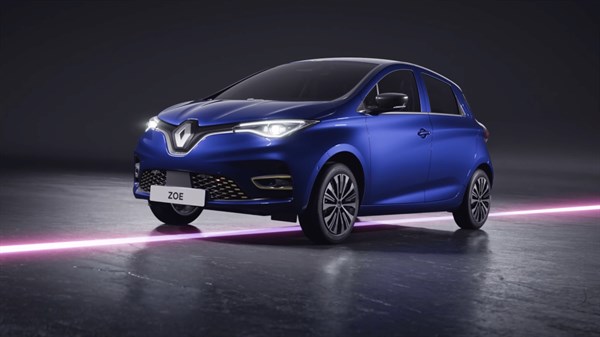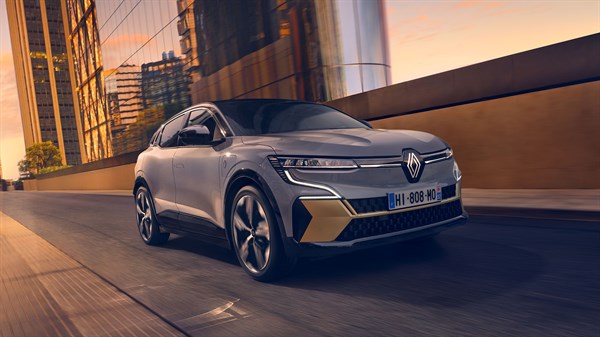RENAULT E-TECH 100% ELECTRIC VEHICLE DRIVING RANGE

electric vehicle driving range
Driving range is one of the key features of electric vehicles.
Just like a combustion-powered engine, the electric motor consumes energy and this consumption depends on factors such as driving style, road type, outside temperature, vehicle weight and options.
Renault E-Tech 100% electric vehicles have been designed to help you optimise your car’s driving range.
For instance, with Megane E-Tech 100% electric, you can drive up to 470 km (according to WLTP cycle).
Just like a combustion-powered engine, the electric motor consumes energy and this consumption depends on factors such as driving style, road type, outside temperature, vehicle weight and options.
Renault E-Tech 100% electric vehicles have been designed to help you optimise your car’s driving range.
For instance, with Megane E-Tech 100% electric, you can drive up to 470 km (according to WLTP cycle).
control your driving range
theory and practice
The theoretical driving range is the distance travelled between a full charge and a completely empty battery.
It is calculated according to the WLTP protocol and serves as a reference, enabling vehicles to be compared.
It is important to know that WLTP driving range, without claiming to be completely representative, is based on factors that are similar to real driving conditions.
It is calculated according to the WLTP protocol and serves as a reference, enabling vehicles to be compared.
It is important to know that WLTP driving range, without claiming to be completely representative, is based on factors that are similar to real driving conditions.
What is WLTP?
It stands for “Worldwide harmonized Light vehicle Test Procedure” and was introduced in 2017. It is a global standard that aims to reflect real driving conditions, while harmonising the tests carried out. It aims to deliver accurate and comparable data for all brands. The WLTP protocol is used to measure driving range and electric consumption, as well as CO2 and pollutant emissions for combustion-powered vehicles.
real-world range
Real-world range depends on exact driving conditions and will therefore sometimes be lower than the rated value. Your driving style, the roads you use and the weather conditions will therefore influence the driving range of your electric vehicle, in the same way as they do with a combustion-powered vehicle.For example, on the motorway, you get 25% less driving range due to higher energy consumption than when using in a normal WLTP cycle.
factors that affect driving range
An electric car’s driving range depends on several external factors and how the user drives.
maximising driving range
dedicated features
Renault E-Tech 100% electric vehicles benefit from innovative technologies designed to maximise their driving range.
more tips
Useful and practical advice to make your electric life easy:
E-Tech 100% electric vehicles and their driving range
| vehicle | driving range (WLTP) |
|---|---|
| passenger cars | |
| Scenic E-Tech 100% electric | up to 625 km |
| Megane E-Tech 100% electric | up to 470 km |
| Zoe E-Tech 100% electric | up to 395 km |
| Kangoo E-Tech 100% electric | up to 285 km |
| business customers | |
| New Master E-Tech 100% electric | up to 460 km |
| Kangoo Van E-Tech 100% electric | up to 300 km |









